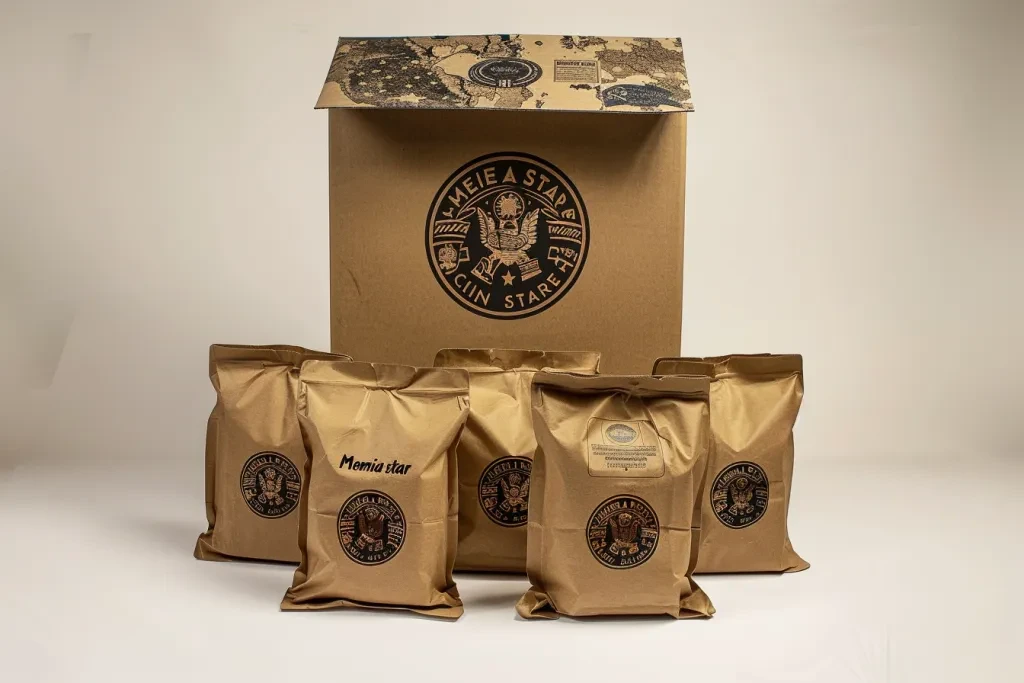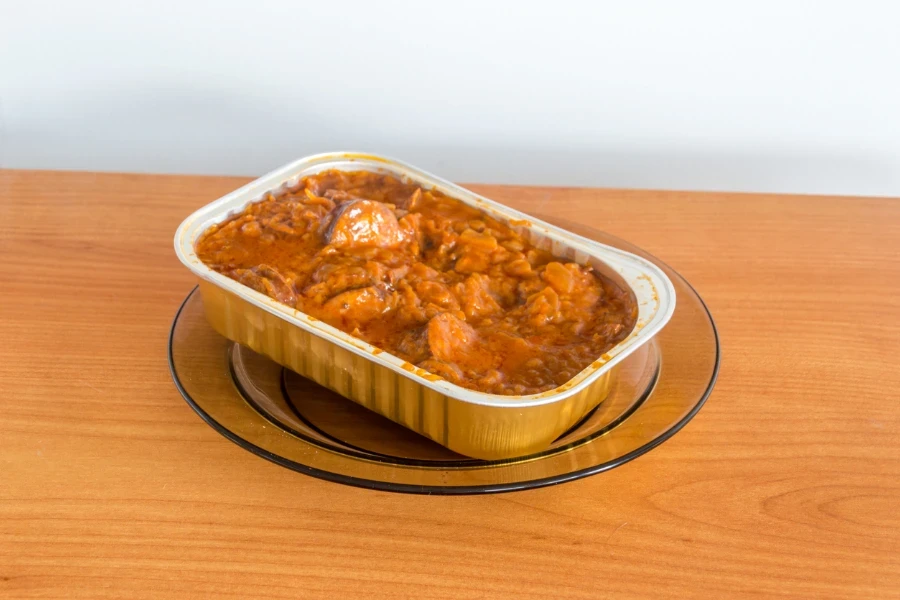Meal, Ready-to-Eat (MRE) meals have become a game-changer for athletes and outdoor enthusiasts alike. Offering convenience, high energy, and nutrition, MREs are designed to support the most demanding physical activities. This guide dives deep into the world of MRE meals, exploring their benefits, popularity, and how to integrate them into your active lifestyle.
Table of Contents:
– What is an MRE meal?
– The rising popularity of MRE meals in sports
– Are MRE meals suitable for athletes?
– How to select the best MRE meals for your needs
– Utilizing MRE meals: Tips and tricks for athletes
What is an MRE meal?

MRE meals, or Meals, Ready-to-Eat, are self-contained, individual rations initially developed by the military to feed soldiers without the need for cooking. These packets are designed to withstand harsh conditions and provide a balanced diet. Each MRE pack typically includes a main dish, side dish, bread or crackers, spread, dessert, and a beverage mix, along with utensils and a heating element. The packaging is compact, durable, and designed to extend the shelf life of its contents, making MREs an ideal choice for situations where traditional food sources are unavailable or impractical.
The technology behind MREs is fascinating, focusing on preserving food quality and ensuring safety without refrigeration. Innovations such as retort packaging—a type of flexible, sealed pouch that can withstand high temperatures—allow the contents to be sterilized and kept edible for years. This method locks in flavor, nutrients, and calories, which are crucial for sustaining energy levels during intense physical activity. The meals are calorically dense, designed to meet the high energy demands of active individuals in challenging environments.
MRE meals have evolved over the years, with improvements in taste, variety, and nutritional content. Manufacturers now offer a wide range of meal options, catering to different dietary restrictions and preferences, including vegetarian and gluten-free choices. This evolution has made MREs more palatable and suitable for a broader audience, extending their use beyond the military to outdoor adventurers, athletes, and emergency preparedness enthusiasts.
The rising popularity of MRE meals in sports

The use of MRE meals in sports and outdoor activities has surged in recent years. This rise in popularity can be attributed to several factors, including the convenience and portability of MREs. Athletes and adventurers often find themselves in environments where traditional food sources are not accessible, and MREs provide a practical solution. The compact and lightweight design of MRE packages makes them easy to pack and carry, ensuring that individuals can sustain their energy levels without the burden of carrying heavy food supplies.
Another factor contributing to the popularity of MRE meals among athletes is their nutritional content. Designed to meet the high energy and nutritional demands of soldiers in the field, MREs offer a balanced mix of carbohydrates, proteins, fats, vitamins, and minerals. This balance is crucial for athletes who need to maintain peak performance over extended periods. The inclusion of a variety of food items in each pack also helps in managing dietary needs and preferences, making it easier for athletes to find MREs that fit their specific nutritional strategies.
The social aspect of sharing MREs during expeditions or team activities has also played a role in their popularity. The shared experience of opening, heating, and eating MREs can foster a sense of camaraderie and teamwork among athletes and adventurers. This communal aspect, combined with the practical benefits of MRE meals, has solidified their place in the sports and outdoor community.
Are MRE meals suitable for athletes?

MRE meals offer several advantages for athletes, particularly those involved in endurance sports or activities that take place in remote or challenging environments. The high-caloric content of MREs is designed to sustain energy levels during prolonged physical exertion, making them an effective fuel source. Additionally, the balanced nutritional profile supports muscle recovery and overall health, which is vital for athletes pushing their limits.
However, there are considerations that athletes should take into account when incorporating MREs into their nutritional plan. While MREs provide convenience and a balanced diet, they are not intended to replace fresh, whole foods entirely. Athletes should view MREs as a supplement to their regular diet, especially useful during training or events where traditional meals are not feasible. It’s also important to pay attention to hydration, as MREs alone may not provide sufficient fluids for high-intensity activities.
The selection of MRE meals can also impact their suitability for athletes. With the wide variety of options available, choosing meals that align with individual dietary needs, preferences, and performance goals is possible. Athletes with specific nutritional strategies or restrictions can often find MRE options that complement their diet, making MREs a versatile tool in their nutritional arsenal.
How to select the best MRE meals for your needs

Choosing the right MRE meals involves considering several factors, including taste preferences, nutritional needs, and specific dietary restrictions. Athletes should look for meals that provide a balance of carbohydrates, proteins, and fats, tailored to their energy expenditure and recovery needs. It’s also beneficial to select a variety of meals to ensure a range of nutrients and prevent palate fatigue during extended periods of reliance on MREs.
Reading the nutritional information and ingredient list on MRE packages is crucial for athletes with dietary restrictions or allergies. Many manufacturers now offer meals that cater to specific needs, such as vegetarian, vegan, gluten-free, or low-sodium options. Exploring these specialized meals can help athletes maintain their dietary principles even in challenging circumstances.
Finally, considering the taste and palatability of MRE meals is essential. While nutritional content is a priority, enjoying what you eat can significantly impact morale and overall experience. Sampling different meals before an expedition or competition can help identify favorites and ensure a more enjoyable and sustainable use of MREs in the field.
Utilizing MRE meals: Tips and tricks for athletes

Incorporating MRE meals into an athletic nutrition plan requires some preparation and experimentation. Athletes should familiarize themselves with the heating process and experiment with different meals during training to determine their preferences and how their bodies respond. It’s also advisable to consume MREs alongside natural, whole foods when possible, to provide a broader spectrum of nutrients and flavors.
Hydration is another critical aspect to consider when relying on MREs. Athletes should ensure they drink plenty of water or sports drinks to stay hydrated, as MREs alone may not meet their fluid requirements. Additionally, supplementing MREs with fresh fruits, vegetables, or energy bars can enhance nutritional intake and variety.
Finally, proper disposal of MRE packaging is essential to minimize environmental impact, especially in outdoor settings. Athletes should practice Leave No Trace principles, packing out all trash, including MRE wrappers and heating elements, to preserve the natural environment for future adventurers.
Conclusion
MRE meals offer a practical and nutritious solution for athletes and outdoor enthusiasts facing the challenges of sustaining energy and performance in remote or demanding environments. While not a substitute for fresh, whole foods, MREs provide a valuable supplement to an athlete’s diet, offering convenience, variety, and the necessary calories and nutrients to support physical exertion. By selecting the right meals and incorporating them thoughtfully into their nutritional strategy, athletes can maximize the benefits of MREs and maintain peak performance, no matter where their adventures take them.




